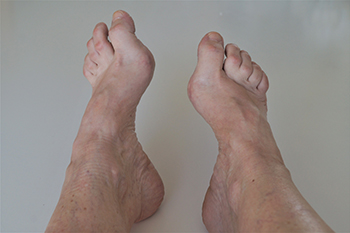
Managing high arch pain, also known as pes cavus, can be challenging, as this condition often places increased stress on the ball of the foot and heels. Pressure from high arches can lead to discomfort and difficulties in finding suitable footwear, which can impact daily activities like walking, standing, and running. High arches can result from bone or nerve conditions, and while less common than flat feet, they are more likely to cause pain. Symptoms include a noticeably shorter foot length and a hollow instep when standing. A podiatrist can help determine the flexibility of the arch and recommend appropriate treatment, which might include custom orthotics, supportive insoles, or specially designed-shoes to alleviate pain and improve mobility. In severe cases, surgery may be considered to correct the foot structure. If you have high arches that cause pain, it is suggested that you schedule an appointment with a podiatrist for an exam and treatment options.
If you have any concerns about your feet, contact Dr. Kenneth Donovan from Advanced Care Foot and Ankle. Our doctor can provide the care you need to keep you pain-free and on your feet.
Biomechanics in Podiatry
Podiatric biomechanics is a particular sector of specialty podiatry with licensed practitioners who are trained to diagnose and treat conditions affecting the foot, ankle and lower leg. Biomechanics deals with the forces that act against the body, causing an interference with the biological structures. It focuses on the movement of the ankle, the foot and the forces that interact with them.
A History of Biomechanics
- Biomechanics dates back to the BC era in Egypt where evidence of professional foot care has been recorded.
- In 1974, biomechanics gained a higher profile from the studies of Merton Root, who claimed that by changing or controlling the forces between the ankle and the foot, corrections or conditions could be implemented to gain strength and coordination in the area.
Modern technological improvements are based on past theories and therapeutic processes that provide a better understanding of podiatric concepts for biomechanics. Computers can provide accurate information about the forces and patterns of the feet and lower legs.
Understanding biomechanics of the feet can help improve and eliminate pain, stopping further stress to the foot.
If you have any questions please feel free to contact one of our offices located in Warren, Livingston, and Toms River, NJ . We offer the newest diagnostic and treatment technologies for all your foot and ankle needs.

